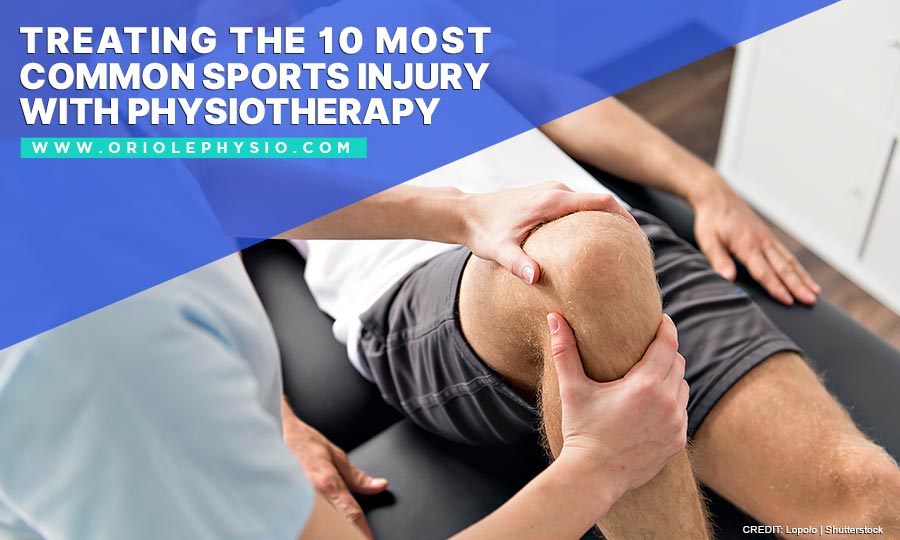Treating the 10 Most Common Sports Injury With Physiotherapy
Participating in sports comes with many well-established health advantages, as well as social and psychological benefits. However, everyone involved in sports is at risk of injuries. While most injuries are treatable, some can be disabling and may prevent the players from enjoying their favourite sports.
Thankfully incorporating regular exercise and sports physiotherapy into your daily training can help minimize the risk of injury while boosting your athletic performance. A professional sports injury therapist can help reduce the repetitive occurrence of injury by training them in the proper warm-up exercises to aid injury reduction.
Treating Common Sports Injuries With Physiotherapy
Sports injuries are inevitable, especially if you are into contact sports. While there are different types of sports-related injuries, understanding each of its symptoms and impact on your health will help determine the most appropriate sports physio treatment. After a thorough assessment, the physiotherapist will address the underlying causes of pain and dysfunction and ensure a full recovery.
Here are the top 10 most common sports-related injuries that can be treated with physiotherapy:
1.Ankle Sprain
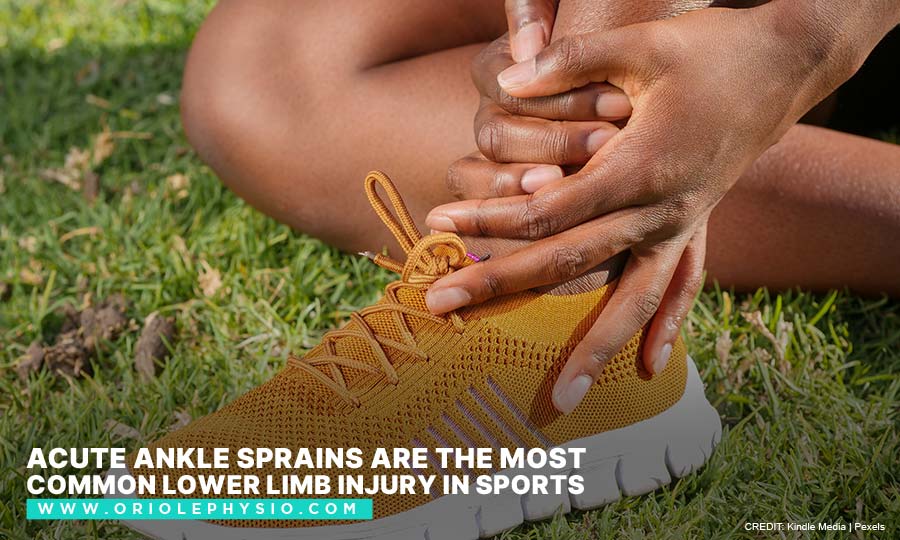
A sprained ankle occurs when the ligaments that connect and support the ankle stretch beyond its limit and tear. Twisting, jumping, and turning your foot in an awkward way can overstretch and cause a tear on the ligaments, resulting in a sprain. Signs and symptoms include:
- Pain
- Swelling
- Bruising
- Limited movement on the affected joint
- Popping feeling or sound in the joint
Treatment:
Treatment for a sprained ankle depends on the severity of the injury. Initial treatment usually requires the RICE principle (Rest-Ice-Compression-Elevation) to reduce inflammation and prevent any further damage to the injured ankle. Mild ankle sprains heal within 2 to 6 weeks while severe sprains can take more than 10 weeks to recover. Stretching, strengthening, balance, and flexibility exercises are essential for rehabilitation and reducing the risk of re-injury in the future.
Keeping yourself active helps strengthen and condition your joints to minimize the risk of potential sprains. If you frequently suffer from an ankle sprain, a sports injury therapist can help you develop a physiotherapy exercise plan that will stabilize and strengthen your joints.
2.Hamstring Strain
Also called a “pulled hamstring”, this common sports-related injury occurs when one or more hamstring muscles get overstretched, resulting in a muscle tear. Hamstring strain is a common problem in athletes engaging in sprinting, football, soccer, lacrosse, and basketball. Its symptoms include sudden pain, tenderness, or cramping in the back of the thigh. Among its main causes is overuse of the muscle and improper stretching technique or lack of stretching. The imbalance between the quadriceps and hamstrings and weakness of the gluteals also increase your susceptibility to the injury.
Treatment:
Applying the RICE principle can treat the pain and discomfort in the hamstring. Stretching and strengthening exercises can support the recovery of a minor hamstring strain. The physiotherapist will diagnose the severity of the injury to develop a treatment plan that will help manage the injury. The physiotherapist will also educate you about the importance of proper warm-up before exercising. Further treatment may be required depending on the severity of the injury.
3.Knee Injuries
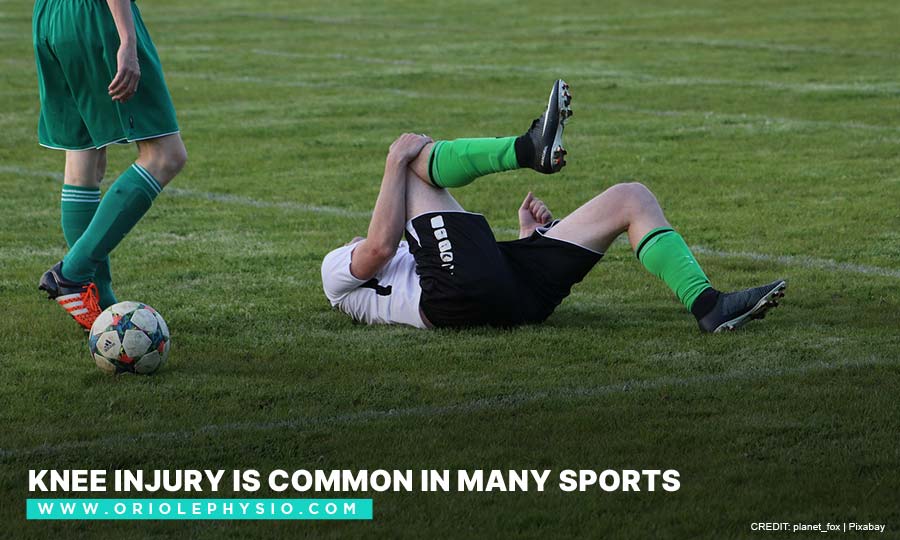
Knee injuries can happen in any type of sport. Collisions, trip and fall, sudden twists and turns, and excessive force can result in a knee injury. Several factors, such as muscle strains, tendon tears, ligament sprains, cartilage tears, arthritis, and patella-femoral pain syndrome are among the causes of knee injuries.
ACL tear is one of the most common forms of knee injuries, which is caused when the athlete suddenly slows down or changes direction (cutting). Athletes who suffered from an ACL injury are more at risk of developing knee osteoarthritis.
Treatment:
Like other types of sport-related injuries, knee damage usually takes time to heal. The causes and the patient’s needs determine the treatment plan. Treatment for knee injury includes custom knee braces, stretching and strengthening exercises, taping, massage, and mobilization techniques. In some cases, severe knee injury requires a surgical procedure to treat the problem.
Wearing well-fitted, stable shoes can protect you from the risk of falling, tripping, or losing balance while playing sports. Visit your sports physio regularly to ensure that you have a strong body and a good balance. Avoid overtraining and make sure to stretch after rigorous physical activity.
4.Groin Strain
Groin strain occurs when there is a tear to 1 of the 5 hip adductor muscle groups. Athletes who are into high-speed activities, such as kicking, sprinting, and football are at high risk of groin strain. The severity of groin strain can affect the level of pain, inflammation, muscle tightness, or difficulty walking.
Treatment:
Applying ice to the affected area helps relieve inflammation. Proper diagnosis, manual treatment, and targeted stretching and exercises support the recovery of the injured muscles.
Warming up your legs and groin muscles before engaging in any physical activity helps reduce your risk. Gradually increase the intensity of your training exercise to avoid straining the muscle.
5.Shoulder Injuries
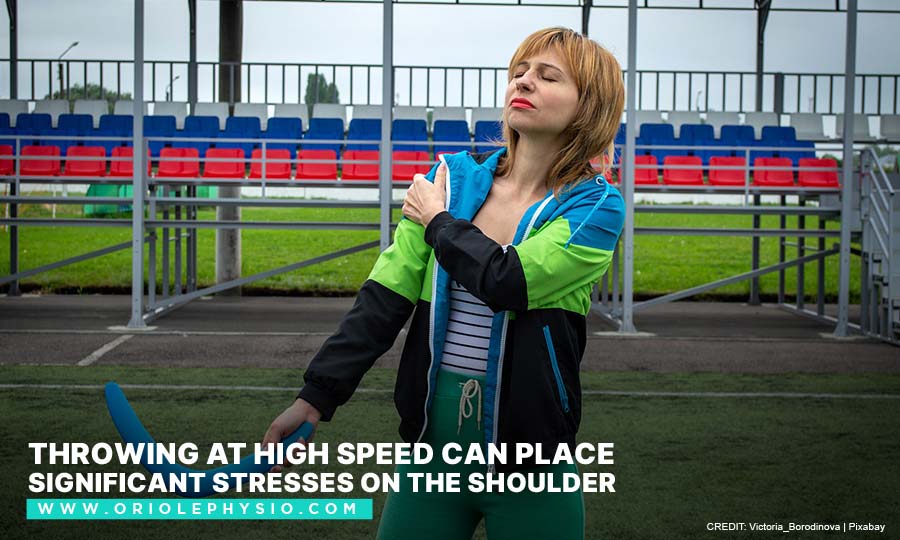
Playing sports that involve battling, throwing, or tackling can put you at risk of different types of shoulder injuries, such as dislocation, fractures, and rotator cuff injuries.
Treatment:
Since the complex structure of the shoulder contributes to painful complications, sports injury therapy treatment for shoulder injures focuses on how to reduce pain and inflammation, improve range of motion and mobility and stabilize the surrounding muscle groups. Treatment often includes taping, manual therapy, dry needling, and specific strengthening exercises.
There is no shortcut method to treating a painful shoulder injury. However, there are several ways that help lower the risk of dislocation, fractures, and muscle strain. Proper shoulder exercises help keep the bones and muscles strong and resilient while stretching and warming up before exercise helps reduce potential injuries involving the shoulder.
6.Stress Fracture
Stress fracture refers to the tiny cracks in the bone due to repetitive force. Runners are more prone to stress fractures. Osteoporosis can also put a person at high risk.
Treatment:
To prevent further stress fractures from occurring, you need to take a break from the activity that caused the injury. It is also important to keep yourself active by engaging in light physical activities. Getting back to extensive training too early may prolong the healing period.
Your physiotherapist may recommend resting and wearing a boot or non-weight bearing for 4 to 8 weeks, depending on the severity of the condition. The sports physio will also teach you certain exercises, load management, and create a training plan that will prevent potential reoccurrence.
7.Tennis Elbow
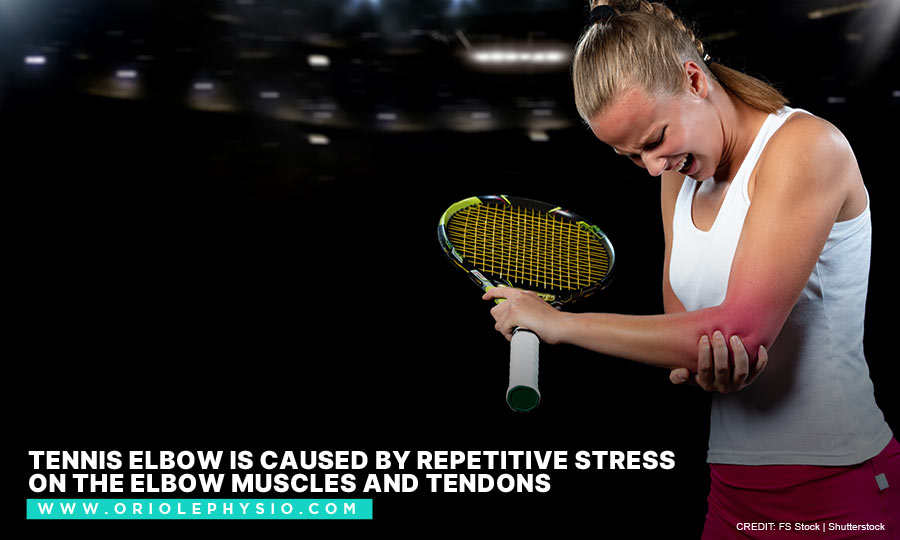
Tennis players are not the only ones at risk of tennis elbow. Playing golf, baseball, and other sports that involve gripping objects for prolonged periods can also increase your chances of developing the condition. Poor and repetitive gripping techniques affect the muscles that enable the wrist and fingers to extend. Pain and discomfort can be felt outside of the elbow, on the bony bump where the muscles are attached.
Treatment:
Treating tennis elbow may involve manual therapy, strengthening, and stretching exercises, braces, and sports-specific rehabilitation. These treatments aim to improve function and minimize pain and discomfort.
The most effective approach to prevent tennis elbow injury is to minimize your engagement in activities that caused the pain. Also, consider improving your techniques and change the equipment to optimize loading. Consulting a physiotherapist can also educate you about new methods to achieve similar or even better results without pain. Make sure to avoid activities and repetitive movements that put unnecessary stress on your tendons.
8.Carpal Tunnel Syndrome (CTS)
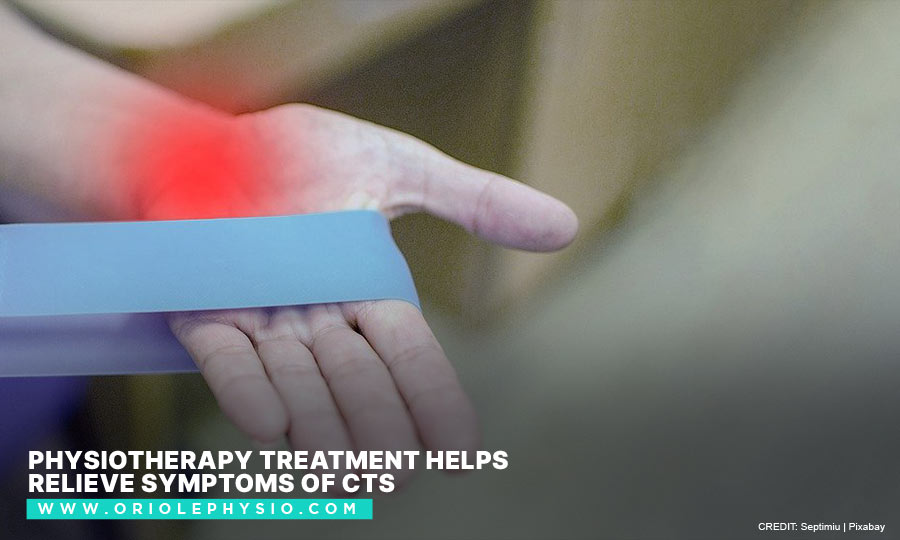
Carpal tunnel syndrome (CTS) is a painful hand condition caused by pressure on the median nerve that runs through the wrist. Sports that involve repetitive hand motions can increase the risk of CTS. Athletes who play racket sports, swimming, handball, bodybuilding, golf, archery, rock climbing, and rowing are more susceptible to developing the condition in the future. Its most common symptoms include pain, numbness, and the pins and needles feeling.
Treatment:
Early detection and treatment can effectively help control the condition from getting worse over time. The physiotherapist may recommend wearing a splint to maintain a neutral position of the wrist and provide a set of tendon and nerve gliding exercises to improve movement and mobility. The physiotherapist may also add strengthening exercises to help stabilize the muscles around the wrist joint and forearm.
9.Achilles Injury
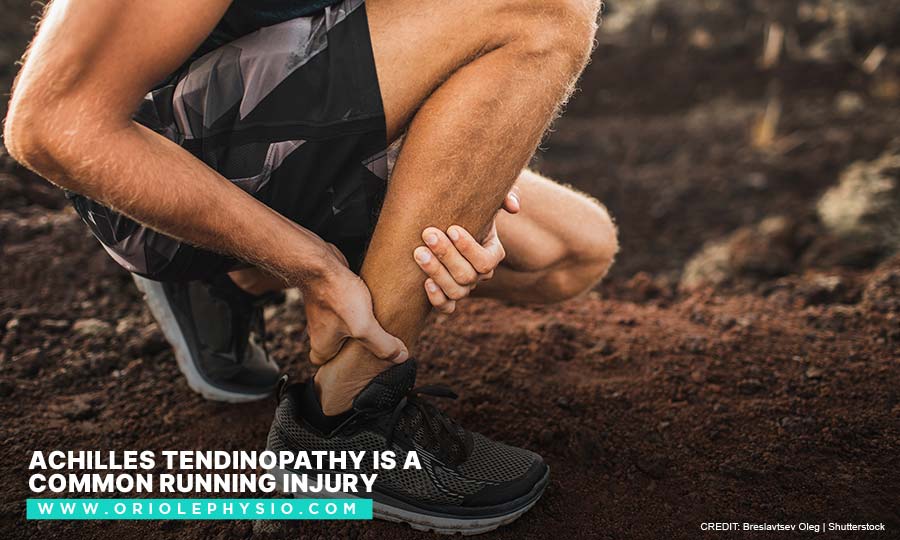
Achilles injuries are commonly seen in sports, such as basketball, tennis, football, and other activities that involve jumping, running, and pivoting movements. Several factors that cause Achilles injuries include:
- Sudden stress can rupture the tendon
- Small, continuous stress cause tear to the tendon
- Overuse of the Achilles
- Use of incorrect footwear
- Sudden increase in intensity
Treatment:
A ruptured Achilles tendon requires immediate RICE treatment to initially manage and control the pain. The physiotherapist may recommend a leg brace to limit movement and allow the tendon to heal. They may also use electrical modalities, such as ultrasound or interferential current to reduce pain and inflammation, and teach you massage techniques for the calf.
To protect yourself from any type of Achilles tendon injury, make sure to do some stretching before engaging in sports. Calf raises and other strengthening exercises can also prevent potential injuries to your lower leg.
10. Neck Injuries

Sports-related neck injuries can range from simple neck sprains or strains to more serious conditions, such as neck fractures and cervical spinal cord injuries. Neck injuries are more common in high-impact sports, such as soccer, ice hockey, wrestling. A sudden twist to the neck or severe blow to the neck or head can result in a neck fracture. Pain, stiffness, and muscle tenderness and tightness.
Treatment:
Treatment for most neck injuries can range from ice application, neck brace, and surgery. Physiotherapy intervention helps treat neck sprains or strains. Physiotherapist guided-strength training, such as weights and pulleys, is used as a rehabilitation tool to help support recovery.
The physiotherapists at Oriole Physiotherapy & Rehabilitation Centre can treat various sports-related injuries and help you get back to your favourite sports safely. If you are a recently injured athlete looking to recover faster and stronger, give us a call today at 416-221-0772 and discover how our comprehensive physiotherapy services can benefit you.

